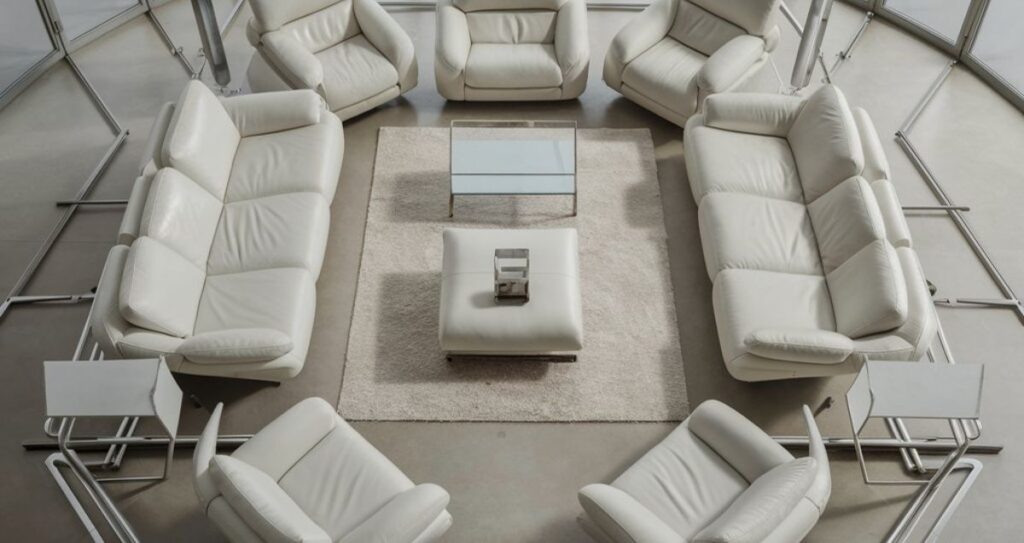Furniture design minimalist focuses on creating simple, functional, and aesthetically pleasing pieces with clean lines and uncluttered spaces. It avoids excessive decoration and favors a “less is more” approach, using neutral colors and practical designs to maximize space and calm the mind.
Feeling overwhelmed by clutter in your home? Minimalist furniture design might be the perfect solution. With its clean lines, functional features, and simple forms, this design style helps create an airy, organized space. Let’s explore how you can embrace minimalist furniture to transform your home.
Minimalist furniture design embraces the idea that “less is more.” By focusing on simplicity, clean lines, and functionality, minimalist design removes clutter, creating a peaceful and organized space. This guide explores the key elements of Furniture design minimalist, offering tips on how to incorporate this style into your home while maintaining elegance and functionality.
Key Features of Minimalist Furniture Design

Clean Lines and Simple Forms
The hallmark of Furniture design minimalist is its emphasis on clean, straight lines and basic shapes. Whether it’s a sleek sofa, a modern coffee table, or an elegant bed frame, each piece is designed with simplicity in mind. Avoid ornate details or unnecessary embellishments, focusing instead on geometric shapes and smooth surfaces.
Functional and Versatile Pieces
Minimalist furniture prioritizes functionality. Furniture should serve a clear purpose and often feature multipurpose designs. For example, a minimalist coffee table might have hidden storage or a modular sofa that adapts to different seating arrangements. This helps maximize space and reduce clutter in your living areas.
Neutral Color Palettes
Neutral tones dominate minimalist design, creating a calming atmosphere. Colors like white, beige, gray, and muted earth tones are commonly used. These shades allow furniture to blend seamlessly with the environment and emphasize simplicity. Bright colors and bold patterns are avoided to maintain the serene look of the space.
High-Quality Materials
Quality materials are essential in Furniture design minimalist. Since the pieces are often simple, the quality of the materials—whether wood, metal, glass, or fabric—stands out. Minimalist furniture often features natural materials like oak, birch, or linen, contributing to a clean and natural aesthetic.
Decluttered and Open Spaces
In minimalist design, furniture is carefully selected to create an open, spacious feeling. Every piece has a purpose, and excess furniture is avoided. By keeping only what is necessary, minimalist homes feel more organized, calm, and inviting. This focus on decluttering also makes it easier to maintain a neat space.
Tips for Incorporating Minimalist Furniture Design
Choose Multi-Functional Pieces
To optimize space in your home, look for multi-functional furniture. Consider items like storage ottomans, extendable dining tables, or beds with built-in storage. These functional pieces fit perfectly with the minimalist philosophy of making every piece count.
Stick to a Simple Color Scheme
Minimalism works best when you stick to a simple color palette. Keep walls and furniture in neutral tones, like whites, grays, and earthy shades. This helps create a cohesive, peaceful atmosphere and highlights the elegance of the furniture without overwhelming the senses.
Avoid Excessive Decor
When adopting a minimalist style, avoid over-decorating. Instead of filling every corner with objects, choose a few standout pieces, such as a large piece of artwork or a statement light fixture. The goal is to create visual interest without cluttering the space.
Invest in Quality Over Quantity
Minimalism is about having fewer, higher-quality items. Rather than filling your space with unnecessary pieces, invest in well-made furniture that will last for years. Durable, timeless materials like solid wood, metal, and leather align with minimalist values.
Keep It Clutter-Free
A minimalist home should feel open and airy. To achieve this, keep surfaces clear and reduce the number of objects in each room. Consider built-in shelving, hidden storage solutions, and minimalist storage boxes to help maintain a clutter-free environment.
Examples of Minimalist Furniture Design

Scandinavian Minimalism
Scandinavian design is closely linked to minimalism, focusing on clean lines, neutral colors, and natural materials. Wooden furniture paired with soft textiles creates a warm, inviting atmosphere while still maintaining minimalist principles.
Japanese Minimalism
Japanese minimalism, also known as “Zen” design, focuses on harmony, balance, and tranquility. Furniture is typically low to the ground, with simple, natural forms that emphasize connection with nature. The style incorporates natural wood, bamboo, and neutral colors, creating a serene space.
Industrial Minimalism
Industrial minimalism combines raw materials like metal and concrete with clean, streamlined furniture. The design often features open spaces with large windows and exposed structural elements. The furniture in industrial minimalist design is sleek and functional, with metal finishes and dark neutral tones.
Conclusion
Furniture design minimalist creates a peaceful, functional home with its focus on simplicity, clean lines, and high-quality materials. By incorporating these principles, you can achieve a clutter-free, aesthetically pleasing living space that promotes calm and order.
Whether you’re furnishing a small apartment or updating your entire home, minimalist design offers a timeless, elegant approach to modern living.
David Mark is a seasoned home improvement expert and the creative mind behind DesignersParadise. With a keen eye for design and a passion for transforming spaces, David offers practical advice and innovative solutions for creating beautiful, functional homes. His insightful articles and tips aim to inspire and guide readers in enhancing their living environments, making every home a true reflection of style and comfort.
